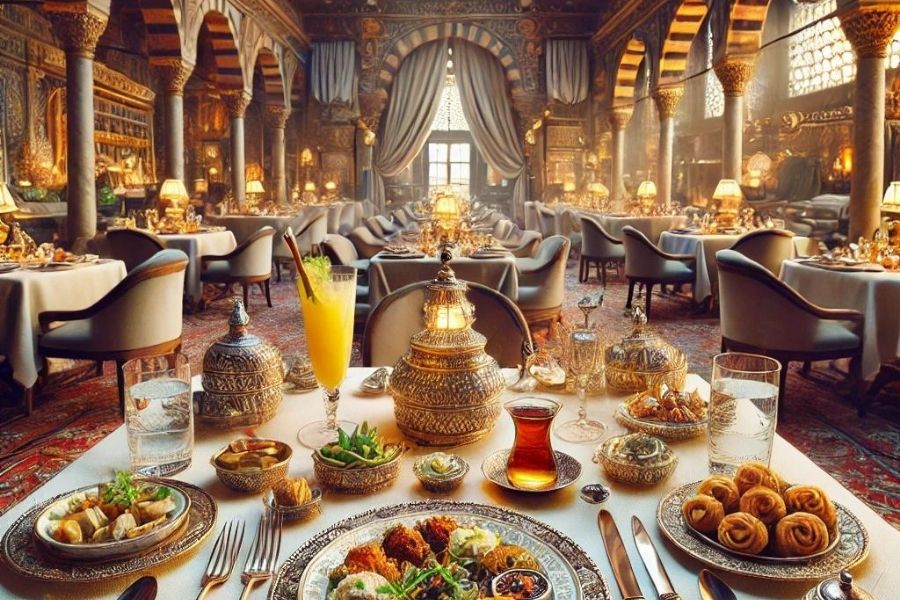masai-land-rover.com – The grandeur of royal courts has always extended beyond their architecture, art, and politics, reaching into the realm of cuisine. Courtly cuisine, with its elaborate dishes and rich flavors, offers a fascinating glimpse into the history, culture, and traditions of monarchies around the world. This article takes you on a journey through royal kitchens, exploring the culinary masterpieces that have delighted kings and queens throughout history.
The Heart of the Palace
Royal kitchens were impressive operations, often sprawling complexes staffed by a team of skilled chefs, bakers, and artisans. These culinary professionals were responsible for crafting meals that not only satisfied the appetites of the royal family but also showcased their wealth and power. The kitchen was a place of innovation, where new techniques and recipes were developed to impress and entertain.
Signature Dishes of the Courts
Biryani
In the Mughal courts of India, biryani was a dish that symbolized the fusion of Persian and Indian culinary traditions. This fragrant rice dish, cooked with marinated meat, saffron, and a blend of spices, was a staple at royal feasts. Each region developed its own variation, reflecting local tastes and ingredients.
Potage
A staple in the medieval courts of Europe, potage was a thick soup or stew made with vegetables, grains, and meat. It was a versatile dish that could be adapted to include whatever ingredients were available, often serving as a hearty and nourishing meal for the royal household.
Kaiseki
Originating from the Japanese imperial courts, kaiseki is a multi-course meal that showcases the season’s finest ingredients. Each course is carefully crafted to highlight the natural flavors and aesthetics of the ingredients, embodying the Japanese philosophy of harmony and balance in dining.
The Influence of Exotic Ingredients
Royal courts were often at the center of global trade, which brought exotic ingredients and spices to their kitchens. The use of ingredients like cinnamon, nutmeg, and cloves became a status symbol, reflecting the monarchy’s wealth and connections. These spices were used to enhance the flavors of dishes and create unique culinary experiences that were exclusive to the royal palate.
Dining as Diplomacy
In many royal courts, dining was an important aspect of diplomacy. Lavish banquets were held to honor visiting dignitaries and forge alliances, with menus designed to impress and convey respect. These feasts were an opportunity to showcase the host’s culinary prowess and cultural heritage, often leading to the exchange of recipes and culinary techniques.
Modern Day Royal Kitchens
Today, royal kitchens continue to uphold their traditions while embracing modern culinary trends. Many royal families are known for their support of sustainable and organic farming practices, integrating fresh, locally sourced ingredients into their menus. Chefs working in these kitchens are tasked with balancing tradition and innovation, creating dishes that honor the past while appealing to contemporary tastes.
Conclusion
Courtly cuisine offers a window into the opulent world of royal dining, where food was not just sustenance but a reflection of power, prestige, and cultural identity. Through the centuries, the royal kitchens have been a source of culinary innovation and artistry, influencing the way we eat and appreciate food today. Whether through historical recipes or modern adaptations, the legacy of courtly cuisine continues to captivate and inspire food enthusiasts around the world.
